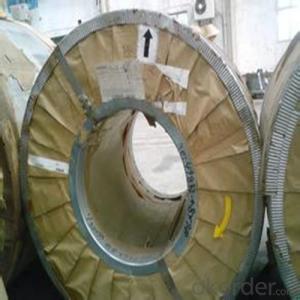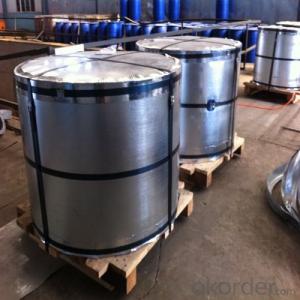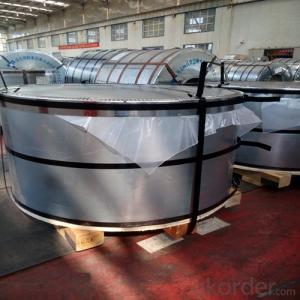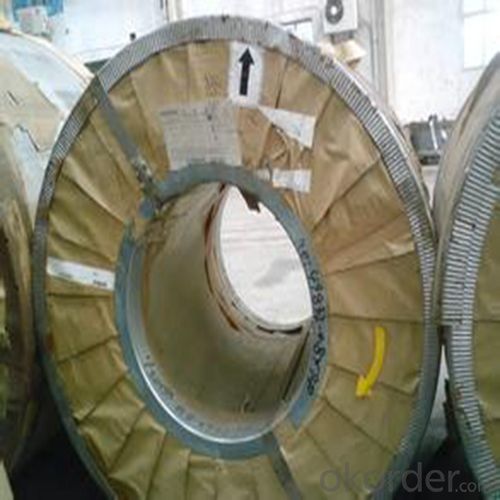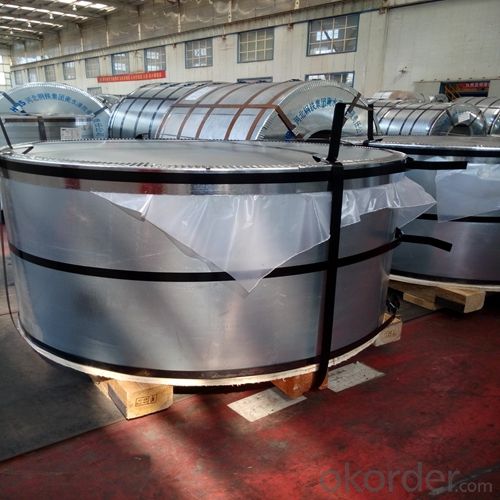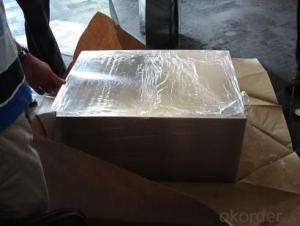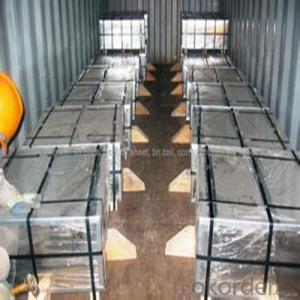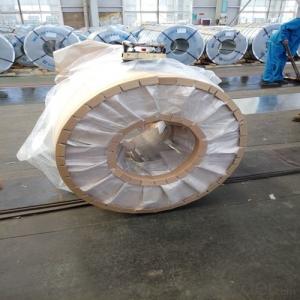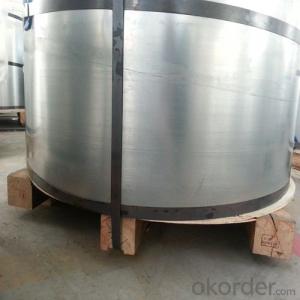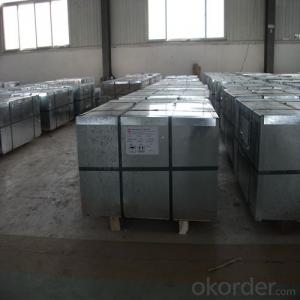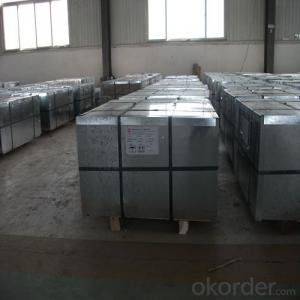Electrolytic Tinplate of Prime Quality for Chemical Cans Use 0.335mm Thickness
- Loading Port:
- Qingdao
- Payment Terms:
- TT OR LC
- Min Order Qty:
- 50 m.t.
- Supply Capability:
- 30000 m.t./month
OKorder Service Pledge
OKorder Financial Service
You Might Also Like
1.Structure of Electrolytic Tinplate of Prime Quality for Chemical Cans Use 0.335mm Thickness Description
Electrolytic Tinplate, is one thin steel sheet with a coating of tin applied by electrolytic deposition. Tinplate made by this process is essentially a sandwich in which the central core is strip steel. This core is cleaned in a pickling solution and then fed through tanks containing electrolyte, where tin is deposited on both sides. As the strip passes between high-frequency electric induction coils, it is heated so that the tin coating melts and flows to form a lustrous coat.
2.Main Features of the Electrolytic Tinplate of Prime Quality for Chemical Cans Use 0.335mm Thickness
Electrolytic Tinplate undoubtedly enjoys the pride of place as a packaging medium especially for food. It owes its unique position to its "nine layer sandwich structure", each of which contributes to its eminence as a packing material. The steel base of electrolytic tinplate provides the necessary strength and formability for can fabrication. The tin-iron alloy layer provides the bond between the steel and free tin layer. The free tin layer is not only responsible for the attractive bright finish and ease of solderability but is also non-toxic- a factor of vital importance in food packaging!
Tinplate is also widely used for making all types of containers such as food cans, beverage cans, and artistic cans, tea cans, painting cans, chemical package cans and dry food package cans, metal printing etc. Its applications are not limited to containers; recently, electrolytic tinplate has also been used for making electrical machinery parts and many other products.
.
3. Electrolytic Tinplate of Prime Quality for Chemical Cans Use 0.335mm Thickness Images
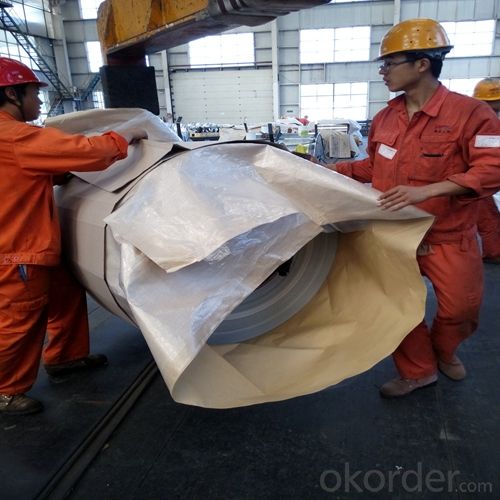

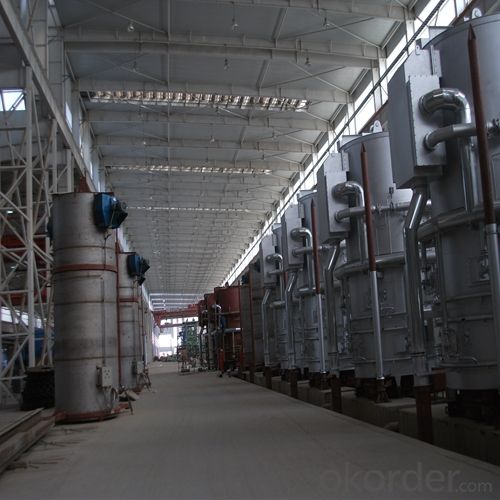
4.Electrolytic Tinplate of Prime Quality for Chemical Cans Use 0.335mm Thickness Specification
Standard: ISO 11949 -1995
Material: MR
Thickness:0.335mm
Width: 600mm
Temper: T3
Annealing: BA
Coil Inner Diameter: 508mm
Weight: 6-10 tons/coil 1~1.7 tons/sheets bundle
Passivation:311
Oil: DOS
Surface: Finish
5.FAQ of Electrolytic Tinplate of Prime Quality for Chemical Cans Use 0.335mm Thickness
- How are the tinplates specified?
The tinplates are specified as per the steel base, extent of tempering, the coating weight, annealing method and the surface finish.
- How many types there are for base steels?
The base steels are of three types: Type MR, L, D
- Q: What are the chemical resistance properties of tinplate?
- Tinplate exhibits excellent chemical resistance properties due to its tin coating, which acts as a protective barrier against corrosion. It is highly resistant to acids, alkalis, and other corrosive substances, making it a preferred choice for packaging materials in the food and beverage industry.
- Q: What are the common opening mechanisms for tinplate containers?
- The common opening mechanisms for tinplate containers include pull-tab lids, twist-off caps, and pry-off lids.
- Q: Can tinplate be used for packaging frozen food?
- Yes, tinplate can be used for packaging frozen food. Tinplate is a type of steel coated with a thin layer of tin, which provides excellent protection against moisture, oxygen, and light. This makes it suitable for packaging frozen food as it helps to maintain the quality and freshness of the product by preventing freezer burn and preserving its taste and texture. Tinplate is also durable and can withstand low temperatures without warping, making it a reliable choice for frozen food packaging.
- Q: How does tinplate affect the overall product visibility?
- Tinplate can significantly enhance the overall product visibility due to its shiny and reflective surface. It adds a premium and attractive appearance to the product packaging, catching the attention of consumers. Additionally, tinplate allows for high-quality printing, enabling detailed and vibrant graphics that further enhance product visibility on store shelves.
- Q: What are the different types of tinplate cans available?
- There are several different types of tinplate cans available, including food cans, beverage cans, aerosol cans, paint cans, and general packaging cans.
- Q: What are the advantages of using tinplate for household appliances?
- There are several advantages of using tinplate for household appliances. Firstly, tinplate is highly resistant to corrosion, making it ideal for appliances that come in contact with water or other liquids. This corrosion resistance ensures the longevity of the appliance, reducing the need for frequent replacements. Secondly, tinplate has excellent heat resistance properties, making it suitable for appliances that generate high temperatures. This heat resistance allows for efficient heat transfer and prevents warping or damage to the appliance. Additionally, tinplate is lightweight yet sturdy, making it easy to handle and transport while maintaining durability. Lastly, tinplate is a sustainable material as it is 100% recyclable, reducing environmental impact and promoting a circular economy.
- Q: Can tinplate be used in extreme temperatures?
- Yes, tinplate can be used in extreme temperatures. Tinplate is known for its excellent heat resistance properties, making it suitable for applications in extreme temperatures. The tin coating on the steel substrate provides protection against corrosion and helps maintain the structural integrity of the tinplate even in high or low temperature environments.
- Q: What are the main markets for tinplate?
- The main markets for tinplate include the packaging industry, particularly for canned food and beverages, as well as the automotive industry for various components. Tinplate is also used in the construction sector for roofing and cladding purposes.
- Q: What are the typical tooling costs for tinplate production?
- The typical tooling costs for tinplate production vary depending on factors such as the complexity of the design, size of the production run, and specific requirements. However, tooling costs for tinplate production can range from a few thousand dollars to tens of thousands of dollars.
- Q: How does tinplate packaging contribute to product protection against oxidation?
- Tinplate packaging provides a protective barrier against oxidation due to its inherent properties. The tin coating on the steel surface acts as a barrier, preventing oxygen from coming into direct contact with the product inside the packaging. This barrier effectively slows down or prevents the oxidation process, preserving the quality and shelf-life of the product. Additionally, tinplate packaging is resistant to corrosion, ensuring the integrity of the package and further safeguarding against oxidation.
Send your message to us
Electrolytic Tinplate of Prime Quality for Chemical Cans Use 0.335mm Thickness
- Loading Port:
- Qingdao
- Payment Terms:
- TT OR LC
- Min Order Qty:
- 50 m.t.
- Supply Capability:
- 30000 m.t./month
OKorder Service Pledge
OKorder Financial Service
Similar products
Hot products
Hot Searches
Related keywords
